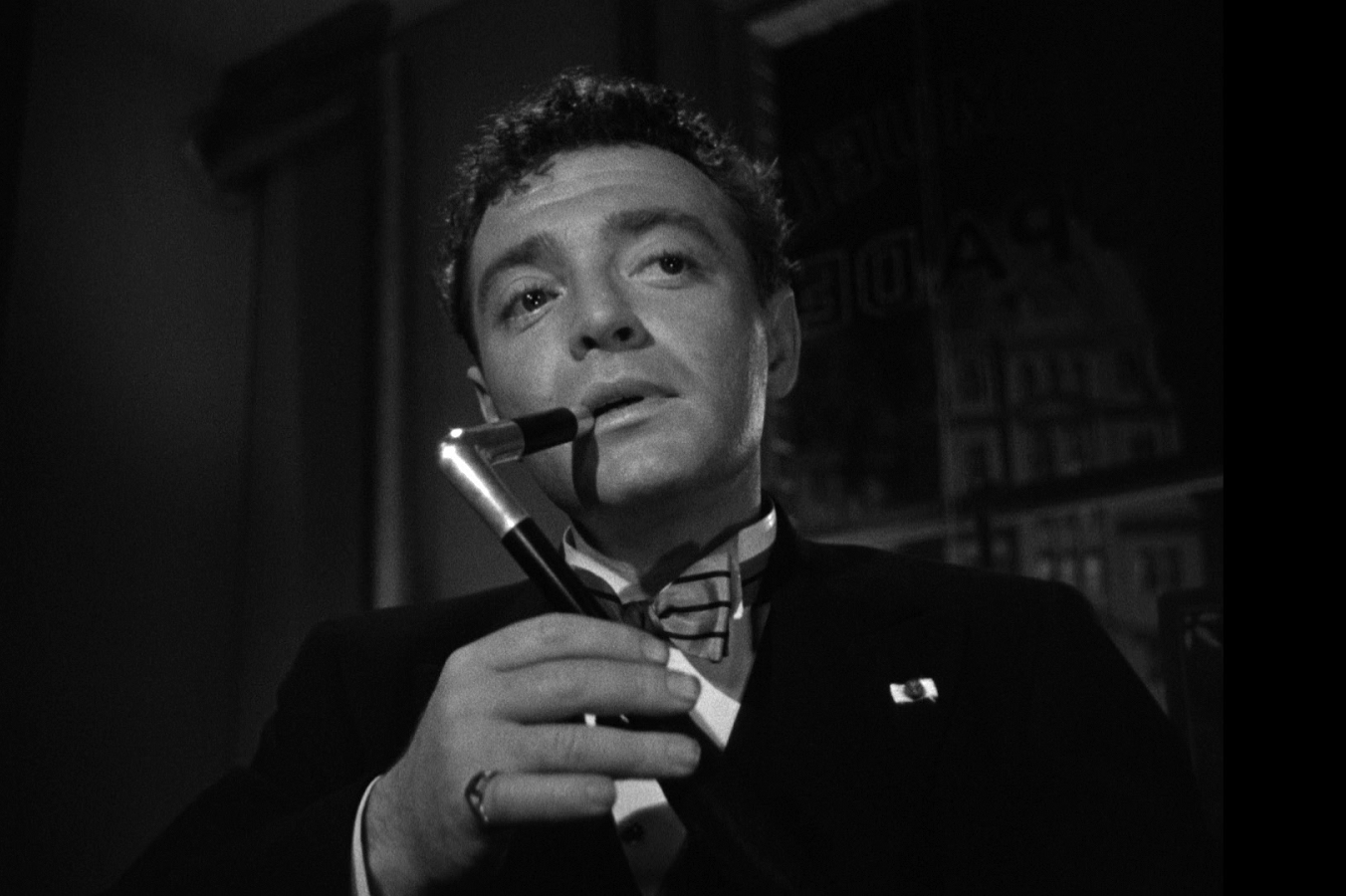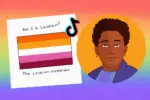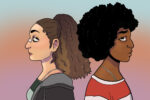From the firing of cannons during the Civil War to the last words of “Romeo and Juliet,” media is responsible for portraying a variety of narratives, which can be a story or an account of an event. In mass media, it is told primarily from the heterosexual perspective. Queer representation has developed significantly over the past century, but it has been an upward battle every step of the way. The beginnings of queer representation weren’t just modes, they were malevolent.
The first media representation of homosexuality is known as “The Gay Brothers,” a two-minute clip released in 1895. Before the Motion Picture Production Code (MPPC) and the Code of Practices for Television Broadcasters, homosexuality was still legally shown on screen. For example, “Gay Brothers” shows two men dancing together as a man plays the violin. This open display on screen was further pursued in the 1900s with films like “Wings.”
“Wings” was set in World War I and focused on the lives of two soldiers and best friends, David Armstrong (played by Richard Arlen) and Jack Powell (played by Charles Roger). Armstrong and Powell deliver an emotional goodbye in the film’s closing scene when Armstrong is lying in a hospital bed with minutes to live. Powell takes his friend’s hand and the two hold each other in their arms until Powell kisses him. “Wings” won best picture at the first ever Academy Awards in 1927.
Queer women were also shown in films. For example, Amy Jolly, a famous performer, is the main character of “Morocco,” which was released in 1930. During one performance, Jolly dresses in a suit and sings before kissing another woman. The woman that she is pursuing blushes and Jolly tips her hat before she continues going after her male co-star. According to Benshoff and Griffin, “As long as one maintained one’s proper gender roles, same sex affection was allowed and even celebrated.” Representation was high, but profits were low.
American families could not spare money for movie tickets during the Great Depression. To encourage ticket sales, film companies showed more scandalous film plots. “The Sign of the Cross,” released in 1932, featured slave boys sleeping with kings and an empress being disrobed by women. This upset Catholic organizations and led to the formation of the National Legion of Decency in 1933. The National Legion of Decency was dedicated to identifying movies that they believed opposed Christian values. Broadcasting and production companies also created regulations on film and TV. The MPPC and the Code of Practices for Television Broadcasters forbade queer representation.
The MPPC, which lasted from 1931 to 1968, banned “any sort of action involving or reference to sexual transgressions and other taboo subjects, forcing gender fluidity and homosexuality in particular to be othered.” The Code of Practices for Television Broadcasters was established in 1952. The Code was created by the National Association of Broadcasters and lasted until 1983. When the Code was first written in 1951, it labeled homosexuality and bisexuality as a “sexual abnormality,” similar to the way one would label a disease. Queer representation has a rough time while the Production Code’s administration held writers in their hands.
“The Children’s Hour,” a book in which two female schoolteachers are rumored to be lesbians, was changed to “These Three” in the 1936 film. Code officials told producer Sam Goldwyn they would not sanction the movie unless he changed its homosexual themes. Filmmakers had to bend to the wishes of the administration or face going out of business. Goldwyn added a male love interest for the two women to fight over instead. But as time passed, filmmakers found ways to work around the production codes.
The stereotypes of homosexuality would soon provide a more entertaining script for films. Instead of removing any homosexual subtext, it was common for writers and directors to include a bizarre character who was coded as gay. These stereotypes portrayed a gay male character as a “harmless sissy” throughout the film. The coded character served as an ongoing joke to amuse audiences.
It also gave a clear message to homosexuals at that time: Straight people and queer people were not considered equal. Making fun of gay coded characters was an easy way to get laughs whilst still following production codes. “The possibility of a homosexual relationship is raised, only to be disavowed through laughter.” The book and film “The Maltese Falcon” was an example of the growing violence of queer representation in film.
One of the supporting characters, Joel Cairo, is a villain who is also gay. He is described as having smaller bones, dark skin and smelling like “the fragrance of chypre.” The first thing readers learn about Cairo is his sexuality when he is labeled ”a queer” by another character. The author then proceeds to describe him as weak and unsure of himself. “He held a black derby hat in a chamois-gloved hand and came towards Spade with short, mincing, bobbing steps.” Men like Detective Sam Spade, the protagonist of “The Maltese Falcon,” are strong and physical.
“Spade took her face between his hands and he kissed her mouth roughly and contemptuously.” He calls Cairo a “fairy” and, later, physically assaults him. Cairo is questioning Wonderly when she slaps him. Appalled, he raises a hand to return the slap and is pushed backward by Spade who responds by slapping Cairo until he begins to bleed saying, “When you’re slapped you’ll take it and you’ll like it.” This brutality toward homosexuals was not uncommon.
Gays were ridiculed, beaten, shot and maimed if they were shown in film at all. The killing of queer characters is often called “bury your gays” and the trope is still prevalent today. Hogan’s 2016 study shows that from 1970 to 2016, 31% of queer female characters were killed. Lesbian and bisexual women have also struggled on American TV screens. Of 383 lesbian and bisexual female characters, only 30 of them have found their way to a happy ending. Where homosexuality was once treated as a joke, it quickly became a death sentence for its characters. Not only were these characters maimed, but they also became wicked.
Throughout the 1940s Samuel Laird Cregar played a gay villain in films such as “Hangover Square,” “I Wake Up Screaming” and “The Lodger.” In 1945, “The House on 92nd Street” reveals the villainous Nazi to be a gay woman dressed as a man. “Rebel Without a Cause,” released in 1955, shows its supporting character John “Plato” Crawford ostracized by his friends due to his sexuality and then shot by police. “Suddenly, Last Summer,” released in 1959, burns a gay man to death. Homosexuals were thieves, pedophiles, Nazis, murderers, rapists and every kind of other villain imaginable. Queer people were stigmatized as one of three things: deviant, silly or evil. Gay women were “conniving and crazy” and gay men were “deranged transvestites.”
Homosexuality was partially considered wrong due to gender dynamics. Men and women were portrayed very differently in the 1940s. Men were written as strong and physical creatures who desired women while women were supposed to be docile and demure creatures who desired men. Homosexuality was a perversion of these rules. If gay men complicated these gender dynamics, how would heterosexuals know which gender was meant to be subservient? In her book “Homophobia: A Weapon of Sexism,” author Suzanne Pharr says homophobia often exists to benefit straight men. “Sexism, the system by which women are kept subordinate to men, is kept in place by three powerful weapons designed to cause or threaten women with pain and loss … the three are economics, violence, and homophobia.”
Anderson says homophobia is a trap for both homosexuals and heterosexuals, especially men, because it requires each sex to live their lives following certain rules. “Men’s roles are more rigidly defined, as witnessed in the more severe social sanctions brought against boys not to be sissies, compared with girls who are thought of as tomboys,” he said. Hollywood made it clear to audiences that homosexuality was not only a sin, but a disease. The AIDS epidemic only increased the demonization of homosexuality and had a not insignificant impact on queer representation in the media.
According to Dr. Dana Rosenfeld of the University of London, “AIDS killed 324,029 men and women in the USA between 1987 and 1998.” The men and women affected by AIDS had few choices. Coming forward as gay was a death sentence due to conservative forces, hate crimes and a president who was unwilling to comment on the grave issue. AIDS was written off as God’s way of punishing homosexuals by those who declared it immoral. And with gay villains gnashing their teeth on screen and being butchered in the streets, what hope did the gay community have? Without a cure those with AIDS were ridiculed, assaulted and, eventually, died. If American families had strong feelings toward homosexuality before, it only escalated with the epidemic.
There were television shows that tried to portray homosexuality in a positive light, but many were shot down by regulators and politicians. “All in the Family,” a popular comedy series in the 1970s, ran for nine seasons and was one the first sitcoms to feature a gay character. In the episode “Judging Books by Covers,” conservative character Archie Bunker learns of his son-in-law’s friend Roger who is flamboyant, charismatic and, apparently, read as a homosexual by Archie. But as the episode continues, Archie learns Roger is not gay. He is later surprised when he is told that his friend Steve, a football player and close friend, is gay.
This episode is one of the first on American television to present a member of the gay community as a real person instead of a mocking stereotype. While the example would not be well-received in today’s world, its message was seen as highly progressive in 1971. Seven years later, “Grease” was still insulting homosexuality. One scene of the 1978 film requires students dance in a competition. Whoever can dance the longest will win, but the principal announces only boy and girl couples are allowed. The protagonist Danny Zuko then picks out a smaller student in the crowd. “Too bad, Eugene,” Zuko says, laughing.
It was refreshing to watch Archie’s friends and family openly support homosexuality. Unfortunately, not everyone was impressed. “Judging Books by Covers” was considered so scandalous that the president himself rebuked the show. In a private recording, President Richard Nixon expressed his disapproval of the episode with a friend. “Goddamnit, I do not think that you glorify, on public television, homosexuality,” Nixon said. “You see, homosexuality, immorality in general, these are the enemies of strong societies. That’s why the Communists and the left-wingers are pushing it.”
While the tape was not released for many years, it was a strong statement of Nixon’s politics and personal beliefs. President Reagan continued the White House’s negative views on homosexuality. He said nothing as the AIDS crises continued, devastating friends and families. Members of the gay community lost partners and friends to the seemingly unstoppable disease. The crisis spread across the nation and overwhelmed big cities. The fear of AIDS can best be summarized by publicist Mickey Correll.
Correll was working on a film with gay themes, “My Own Private Idaho,” released in 1991. “The distributor doesn’t want the film positioned as a gay film. Then many people would be frightened away,” he said. Many ‘80s movies are abundant with jabs at the gay community, even teen movies. In 1985, Michael J. Fox portrays Scott Howard, a teenager and werewolf. When Howard tells his friend Stiles that he is a werewolf, Stiles is visibly relieved. Why? Because Stiles thought Howard was gay. “If you’re gonna tell me you’re a fag, I just don’t think I could handle it,” Stiles said. But this teen film is not the only ‘80s movie to insult the gay community.
“Adventures in Babysitting,” released in 1987, also discusses homosexuality. One of the main characters, Sara Anderson, is decorating a Thor figurine when her brother Brad comes into the room. He asks his sister why he is bothering with the toy and the little girl stares up at him and says that Thor is her hero. Brad smirks and calls Thor the worst insult he can think of — a homosexual. Brad runs off as his sister shouts for him to “take it back,” angry at her hero having been so cruelly insulted. In 1987 “homo” was the nastiest insult a child could say. “Silence of the Lambs” fueled outrage in the gay community. The film even resulted in riots outside of the Academy Awards for its depiction of the murderer Buffalo Bill. Buffalo was viewed as a promotion of transphobia due to his feminine voice, his poodle and his cross-dressing.
With Hollywood producing gay villains and news covering the “gay disease” of AIDS, it was difficult for homosexuality to receive positive representation. The codes of production and broadcasting, stereotypes and the demonization of the AIDS epidemic have all contributed to the lack of positive queer representation in mass media. Queer representation, and representation in general, has improved. Stiles from “Teen Wolf” no longer feels threatened by homosexuality. In the 2011 television series, he is strongly hinted as being bisexual. Modern audiences enjoy the homosexual narrative, and without homophobic production codes, writers are welcome to create them.
















